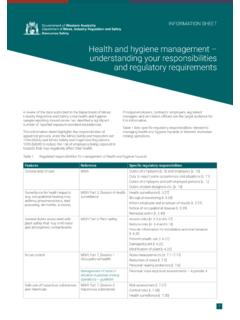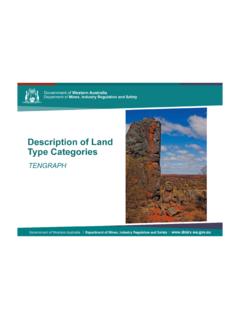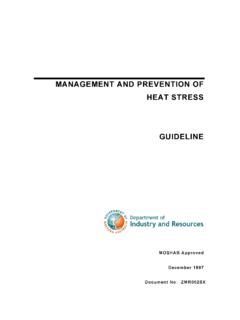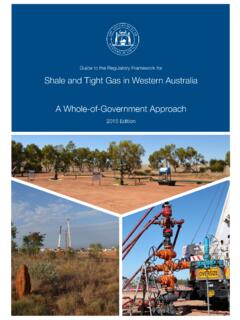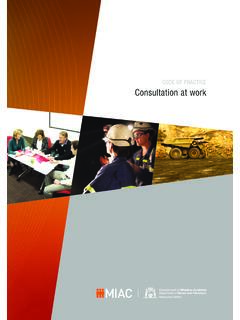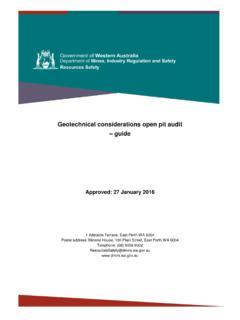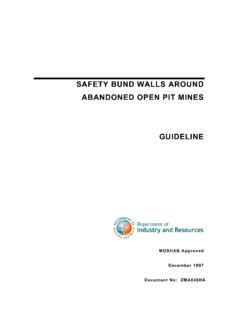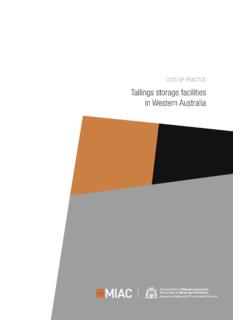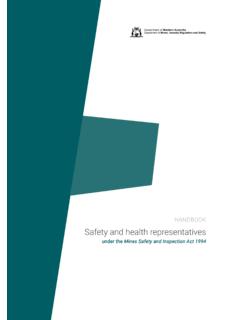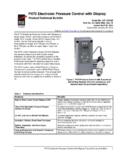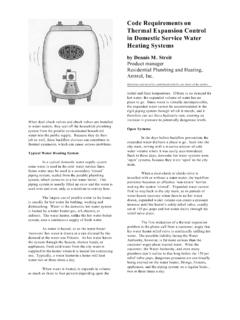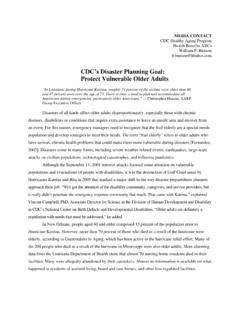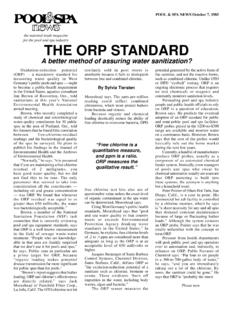Transcription of At work and home
1 PROTECTAt work and home110 dB - Haulage truck140 dB - Jet plane taking off110 dB - Mill140 dB - Jackhammer120 dB - Underground drilling3 dB increase = doubling of sound energyWhat are the signs of hearing injury? Sounds or speech seem muffled Difficulty telling words apart or picking out a voice in a crowd Distorted sense of loudness or hypersensitivity to sounds - sufferers may ask people to speak up, then complain that the person is shouting Ringing in the ears (tinnitus) Needing to excessively increase the volume of a television, radio or portable sound device in order to hear them Difficulty hearing properly on the telephone Difficulty hearing and understanding when children do I know when it is too noisy?If you must shout or raise your voice to be heard by a workmate one metre away, it is likely that your workplace noise levels are high and potentially dangerous.
2 Typical noise readings for some common activities are whether your workplace has done a noise survey and what the results were. Also, find out whether a survey was done following implementation of the noise action plan to determine the effectiveness of noise control you can do at work Use the noise control equipment provided and ensure it works Use hearing protection, such as earmuffs, earplugs, or both, and ensure it is adequate Put on your hearing protection before entering noisy areas Don t remove your hearing protection to talk in noisy areas Minimise the time you are exposed to noise Look after your earmuffs as damaged protectors won t work properly Insert earplugs correctly Don t re-use earplugs as this may cause ear infections Report any problems with hearing protectors or noise control equipment to your supervisor Ensure you are not exposed to ototoxins ( ear poisons such as solvents and lead)
3 Once the damage is done, there is no cure120 dB - Surface drilling110 dB - Maximum volume for MP3 players110 dB - Chain saw60 dB - Normal conversation110 dB - Angle grinderWhat you can do everywhere Turn down the volume, particularly if you are wearing earphones or earbuds Noisy work at home or when out and about is just like noisy work at work , so protect your hearing the same way Get your hearing tested if you suspect you have a hearing about design and buy quiet Why is managing noise important?Occupational noise-induced hearing loss is the biggest compensable disease in Australia. The annual national compensation cost is estimated to be more than $30 million, and the real cost is likely to be ten times data for mining operations show that some employee groups ( underground) are at particular only are there significant hearing threshold shifts in some sections of the workforce from age 40 onwards, but initial health assessments done when people join the industry show that many already have some hearing loss.
4 Although more prevalent in those who are 40 and older when they start, noise-induced hearing loss is being recorded for workers in the 20 to 39 age group. So it is vital that hearing is protected at work and about designWhen designing an operation or workplace layout, you should consider: all sources of noise, the interaction between sound waves, and how sound interacts with the environment by passing through or reflecting from surfaces or waves are: attenuated (weakened) by absorption in air, refracted (bent) by winds and thermal gradients, directionally affected (blocked) by barriers, diminished with distance, and cancelled or amplified by noise Choose equipment conforming with noise standards ( Buy quiet ) Specify noise performance criteria on engineering contracts ( crusher design and construction) Use noise barriers, baffles or enclosures for particularly noisy equipment ( crushers, compressors, grinders, pumps, gearboxes) or work ( welding, sheet metal work ) Position equipment in sheltered locations ( behind earth mounds) Operate equipment within specification and capacity ( don t overload) Use noise abatement accessories for earth-moving equipment ( sound hood, mufflers)
5 Use noise-attenuating jackets around impact equipment ( jackhammer) Use noise-absorbing pads on the foundations of vibrating equipment ( crusher) If practicable, turn equipment off when not in use Keep equipment in good condition Ensure site personnel understand their role in managing noise on
